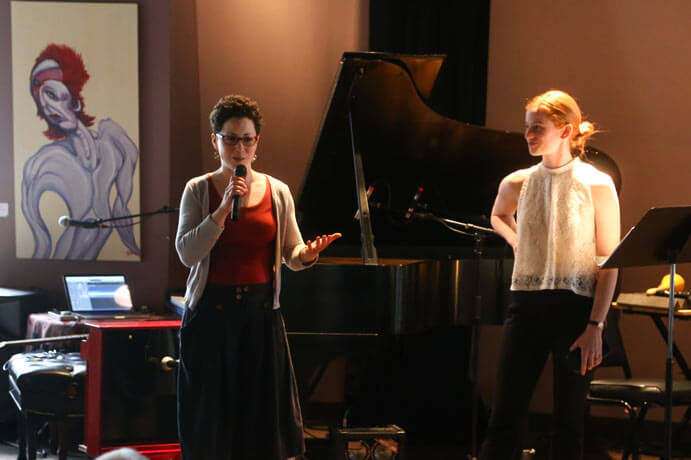The second annual Re:Sound New & Experimental Music Festival presented by Cleveland Uncommon Sound Project (CUSP) was jam packed with an eclectic mix of music styles and venues. From June 6-9, 2019, 14 acts in six concerts over four days were presented in five different venues ranging from a fiber arts workshop space on the east side of Cleveland to a nonprofit jazz club on the west side. There were solos, duos, trios and quartets offering a wide array of music, including pieces accompanied by videos, recordings of interviews, toys, maps of trips, and a mystery box of “stuff” that turned a soprano’s concert into performance art. The festival events were well attended and the audiences were rewarded with many and frequent highlights.
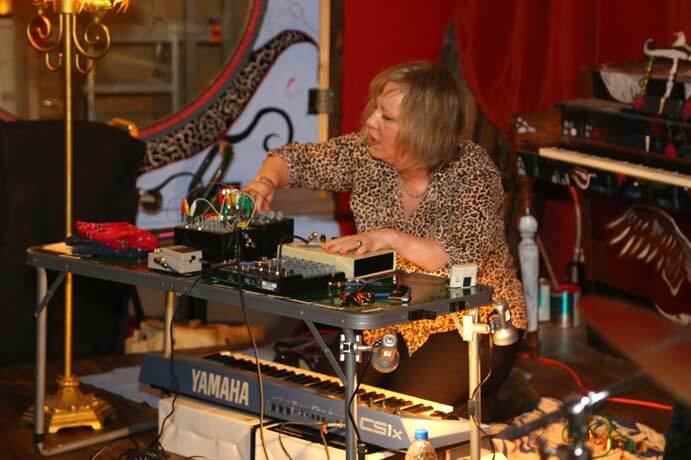
Lisa Miralia of Miralia/Stranahan Duo (photo by Emanuel Wallace)
Cleveland noise experimental music scene favorites Miralia/Stranahan Duo (Lisa Miralia, electronics, and Paul Stranahan, percussion) launched the proceedings at Negative Space gallery on Thursday, June 6 with an explosive version of Crescendo Decrescendo from their latest CD. Paul was surrounded by his vast array of bowls, cymbals, gongs, bells, and drums. In addition to her synthesizers and sound board, Lisa had her own set of small bells wind chimes to complement her electronic musings. The work started off whisper quiet, slowly building to raucous crescendo, then slowly decaying back to silence.
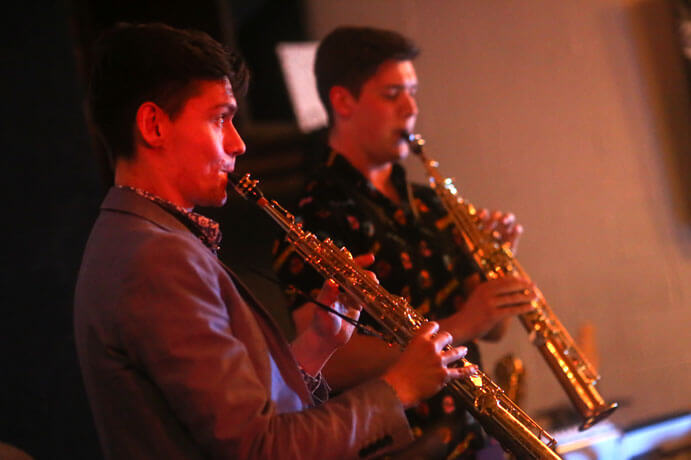
Brandon Quarles and Hunter Bockes of ~Nois saxophone quartet (photo by Emanuel Wallace)
CUSP co-founder Noa Even told us their ambition for Re:Sound is to limit their presentations to 21st century music, but we were happy they made exceptions for two particular pieces. Also on Thursday, Chicago-based ~Nois saxophone quartet (Hunter Bockes, János Csontos, Jordan Lulloff, Brandon Quarles) performed Thirteen Changes (1968) by Pauline Oliveros, a set of 13 short text phrases to inspire performers to improvise, based on deep listening. The four all played soprano saxophone, and movement was an important element of their performance. They sat on the floor, lay on floor, engaged in some unique hand clapping and, by the end, were scattered in four outlying positions in the gallery. On Friday, June 7 at The Magelan gallery, Boston-based trio Sound Energy (Micah Brightwell, violin, Sam Kelder, viola, Benjamin Swartz, cello) played the other pre-21st century work, Sofia Gubaidulina’s stirring String Trio (1989). This three movement piece, each with its own unique sound world, included so many extended techniques it could easily have been written today.

Sound Energy string trio (photo by Sophie Benn)
Another Re:Sound highlight came on Saturday, June 8 at the Bop Stop: The Language of Landscapes by Christopher Stark, performed by New Morse Code (Hannah Collins, cello, Michael Compitello, percussion). Although this was not the world premiere of the music, it was the world premiere of its performance with video created specifically for it by Andrew Lucia. The abstract nature of the video was a wonderful complement to an already abstract piece of music that employed some especially interesting techniques, such as preparing the cello with cardboard intertwined in the strings and bowing with styrofoam. Hannah introduced the piece as one in which recorded natural sounds would be mixed with artificial sounds, saying that sometimes the natural sounds might sound more artificial than the sounds that were in fact artificial, adding up to a delightfully disorienting experience.
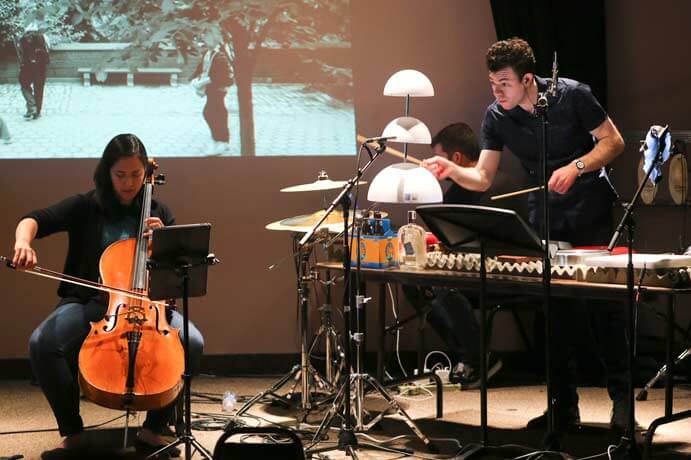
New Morse Code duo (photo by Emanuel Wallace)
There were four world premieres during Re:Sound, including two by high school students Emma Eddy and Mya Vandegrift, which were presented at the festival finale on Sunday, June 9, again at the Bop Stop. Their pieces were commissioned by CUSP through its Co-Lab project in which they chose these two young composers to work with Cleveland-based No Exit New Music Ensemble to write a piece for the festival. In Emma’s piece, The Canary and The Crane, there were beautiful melodies in which one could hear distinct bird-like sounds. In Non-Alcoholic Beverages, Mya augmented the ensemble’s standard instrumentation with tuned wine glasses, glass bowls, and employed especially creative techniques for a high school student composer.
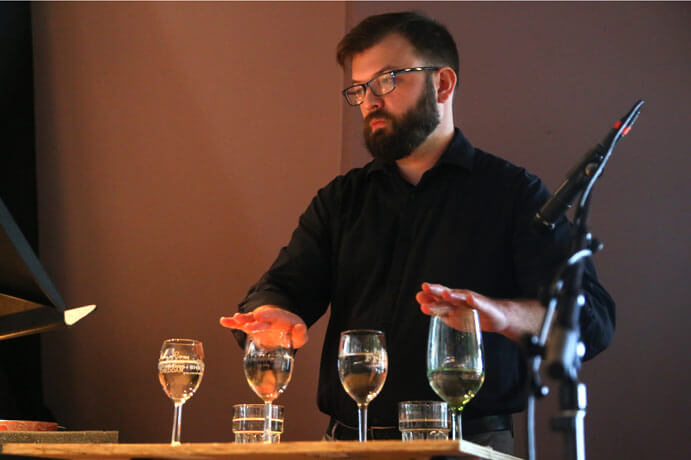
Percussionist Luke Rinderknecht of No Exit New Music Ensemble (photo by Emanuel Wallace)
In just two years, Re:Sound has significantly raised Cleveland’s adventurous music credentials, and there’s much more excitement to come. According to Noa and co-founder Sophie Benn: “We’re continually challenging our own notion of ‘new and experimental music’ and what falls into this incredibly broad category. Because the festival is somewhat dictated by the proposals we receive, we are currently working on more ways to get the word out, to broaden the range of artists that apply. We aim to curate a festival that reflects the new music scene in the most inclusive and diverse way possible.”


